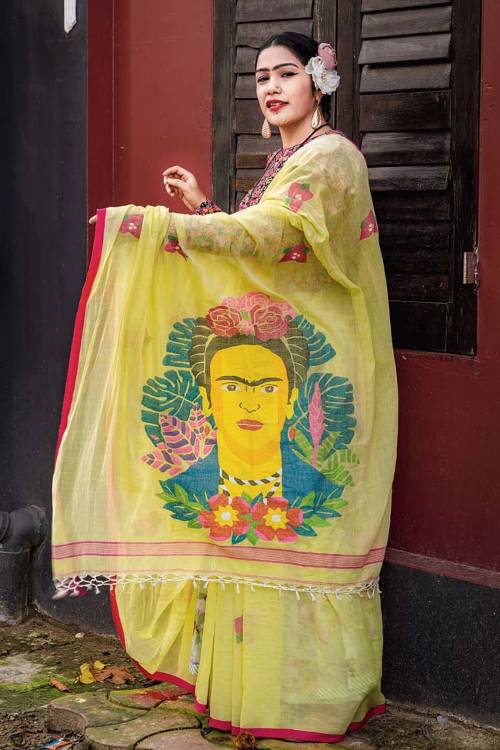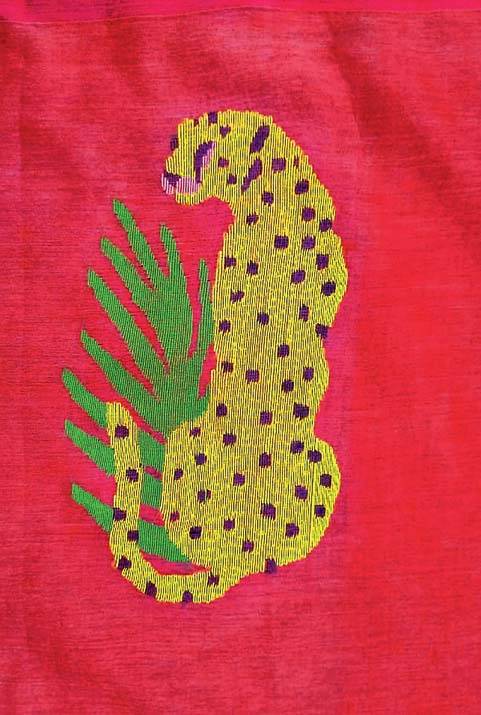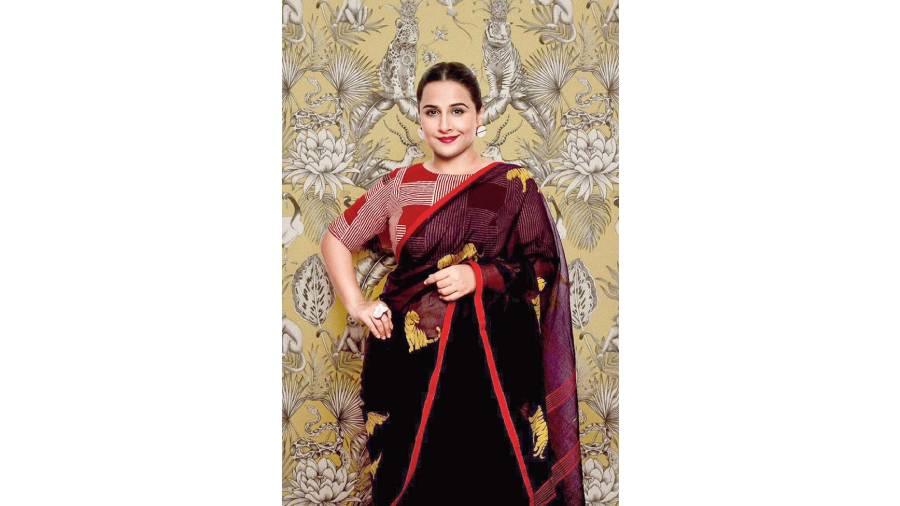Fresh and earthy, Ghuri by Debjani is a labour of passion of Debjani Bose Ray Chaudhuri, a high-school biology teacher-turned-textile designer. A south Calcutta girl who went to St. Xavier’s College and Ballygunge Science College and taught for a while, is now “revisiting childhood” on saris, signature pieces with soul. Think Malgudi Days and Satyajit Ray. She sketches everything herself. The brand logo of the kite in also a creation of hers, trying to break free from gender shackles and an ode to The Kite Runner by Khaled Hosseini, who she loves “pagoler moto”. The lockdown has been a time for experimenting and learning. Debjani is also honing her knowledge in textile designing and has just designed a sari for the promotions of the Vidya Balan-starrer Sherni. A candid chat with Debjani, who now lives in Howrah.

Debjani Bose Ray Chaudhuri Sourced by the correspondent
Fresh and earthy, Ghuri by Debjani is a labour of passion of Debjani Bose Ray Chaudhuri, a high-school biology teacher-turned-textile designer. A south Calcutta girl who went to St. Xavier’s College and Ballygunge Science College and taught for a while, is now “revisiting childhood” on saris, signature pieces with soul. Think Malgudi Days and Satyajit Ray. She sketches everything herself. The brand logo of the kite in also a creation of hers, trying to break free from gender shackles and an ode to The Kite Runner by Khaled Hosseini, who she loves “pagoler moto”. The lockdown has been a time for experimenting and learning. Debjani is also honing her knowledge in textile designing and has just designed a sari for the promotions of the Vidya Balan-starrer Sherni. A candid chat with Debjani, who now lives in Howrah.
Let’s start with your journey. How old is Ghuri by Debjani?
I started Ghuri in October, 2017. I am not from a fashion background. My masters and MPhil were in zoology. I used to teach and then my daughter was born in 2012. Post that I took a break, which is when I reconnected with my long-lost passions like thumri lessons and guitar.
I started getting into designing with textile jewellery. Painting has been a part of my life since childhood. My first income was from a Bangladeshi project where I had to draw the different species of fish that have gone extinct. Rs 3,000 in 2004. When I started doing clothes, I ventured out with block prints. I studied printing. The sari was a collage of pictures of all Satyajit Ray heroines, in December 2017. This was heavily copied and I eventually had to destroy the screen of this sari. The whole experience was a big learning for me and I started moving towards my own print set-up, which I could closely monitor.
In 2019, I met a master weaver. You’ll notice not many have tried figurative motifs on a Jamdani. Biren Basak is among the few who have done it. I have tried to translate the essence of the prints into my Jamdani journey. The pandemic gave me a lot of time to experiment with Jamdanis.
My mother and I had teamed up to design my wedding saris in 2006. My mother, a state-level athlete, is a Bengali born and brought up in Benaras. So she already had the knowledge of Benarasi weaves and embroidery. So, (when I started this), that helped me a lot.
How did the Sherni project come to you?
I made the tiger motif on Jamdani last year. Vidya Balan’s team had got in touch with me for the Shakuntala Devi promotions as part of the #vocalforlocal movement and asked me if I would customise, which is always thrilling. They called me again in 2021, this time for Sherni. They asked me to make something handwoven and handspun. I made four different designs, three in Jamdani and one in batik. One is the sari she is wearing. The other Jamdani has a jaguar motif and there is another one in tussore Jamdani with a big tiger motif on the aanchal.
There was a conference call about the the nitty-gritty. In the Shakuntala Devi sari, the tiger motifs were a little small with maroon on top, black at the bottom and a yellow border. This time, the proportions were blown up and it was in monochromes like red, dark blue and purple. I think she loves black. So, we made it in black.
They were particular about the fall of the sari. This Jamdani was just 300g, almost like silk.
How was it working on the project? Did you meet Vidya Balan?
The first time was professional. This time, I felt I was a part of their team. She was a part of the call. Ekta jinish hochhe, ekdum bhoy paor byapar nei. She is easy-going and not bossy.
You are doing kantha too...
I give the traditional motifs a bit of a twist. They are a limited collection, maybe four pieces a year. One I do pretty regularly... weave Nakshi Kanthar Math like a painting in kantha.
You have a special affinity towards animal motifs...
I studied zoology... so... (laughs). The detailing I have picked up in my student days, helps me a lot in drawing now.
Who are your favourite designers?
Parama (Ghosh of Parama) has been a huge source of inspiration. She has worn my Na Hanyate sari, which was very fulfilling. Of course there is Sabyasachi Mukherjee. I like Manish Malhotra for the detailing.

Vidya Balan in Ghuri by Debjani during Shakuntala Devi promotions

The Frida sari

This Satyajit Ray sari, to commemorate the maestro’s birth centenary, was designed with Sandip Ray’s permission. The Devi motif is from the “original poster” of the 1960 film. “Sandip Ray had said to incorporate Soumitra Chatterjee too since he was there in both films and we had just lost him,” said Debjani.

The Starry Night sari

The jaguar motif from one of the Sherni saris that Ghuri by Debjani has designed for Vidya Balan











